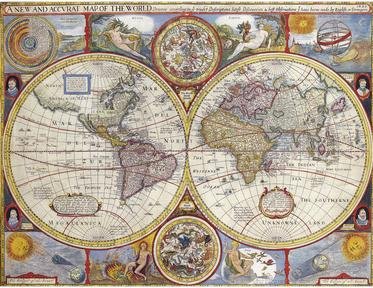Quiz Answer Key and Fun Facts
1. "... attending a party hosted by a SOCIAL PRO under the watchful gaze of Athens' ancient citadel ...". What is the name of the citadel?
2. "...whilst visiting Pisa's Cathedral Square, I received an INNATE GLOWER from the local guide for trying to order a fresh expresso in my best Italian. I guess he doesn't have a sense of humour." Which attraction of Pisa does the diary entry reveal?
3. "... took a detour near Paris to see the Sun King's royal château. I was particularly taken by a SILVER SEAL on display in one of the drawing rooms ...". What is the name of the palace?
4. "Having arrived in Florence last night, my first port of call was the art museum. Like many, my eye was drawn to Botticelli's Primavera. I overheard someone asking IF FRILLY GAUZE was fashionable in those days ..." What is the name of the art museum?
5. "Visiting the ruins of Pompeii, I was amused to see some Roman graffiti. One of the less vulgar ones was 'Phileros is a EUNUCH!' LAMER ones include: 'Epaphra, you are bald!' and ..." Buried along with Pompeii, which neighbouring town is also unusual in having such graffiti preserved?
6. "A proud remnant of ancient Greek history, much abused and with some areas more PRONE THAN erect. It would have been something to have seen the Elgin Marbles in their original setting here in Athens." What structure is being described here?
7. "Now in Constantinople, I go underground near the Hagia Sophia to see this Byzantine water storage system, the largest in this city. I am warned about the IRASCIBLE CATS IN residence." Where are these cats?
8. "RAN LAX IDEA past my friend when at the Citadel of Qaitbay, pondering where the remains of the Pharos Lighthouse might be. With all these earthquakes, why not in the harbour?" In which city can the remains of this ancient lighthouse be found?
9. "Arrived in Tunis late afternoon to visit this ancient Phoenician capital, only to have a camel CHARGE AT me. Had to step smartly out of the way." What former capital lies within Tunis? (Click on the photo for more detail.)
10. "At this site which saw the Athenians send the Persians home, I've just re-read Robert Browning's poem 'Pheidippides'. Pheidippides certainly did more THAN ROAM. I hear tell that there is soon to be a race in his memory." What is the name of the place which gives the battle its name?
Source: Author
suomy
This quiz was reviewed by FunTrivia editor
spanishliz before going online.
Any errors found in FunTrivia content are routinely corrected through our feedback system.

